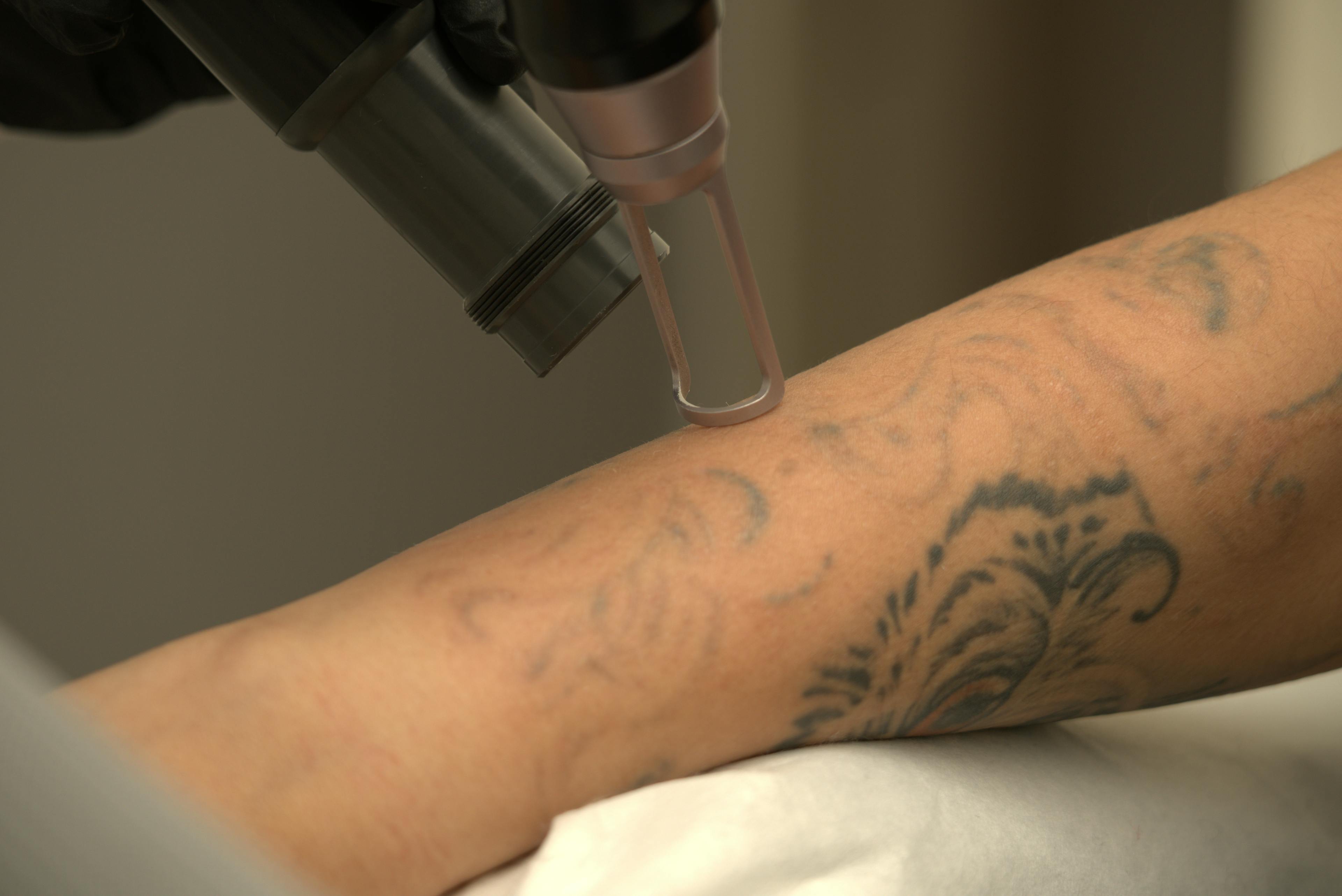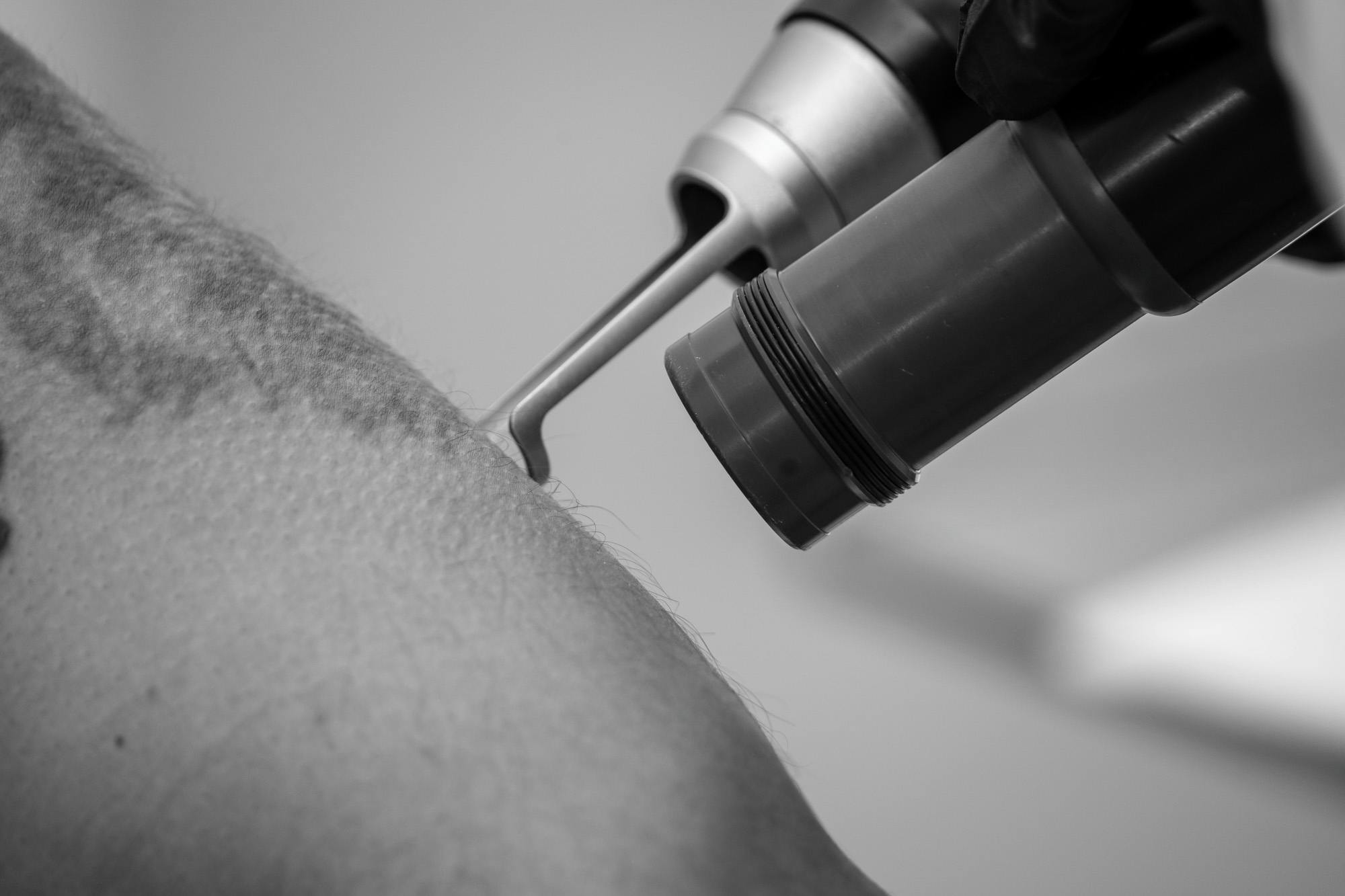
Blogg
The History of tattoo removal
The History of tattoo removal
Tattoos have been a form of personal expression for centuries, but how have the methods of removing them evolved when the personal expression no longer aligns with the individual who bears it?
Tattoo removal has come a long way since its early beginnings when painful and scar-inducing techniques were the only options available. In this article, we briefly explore the history of tattoo removal and how it has developed into the advanced laser technology we use today.
Early Forms of Tattoo Removal
Tattoo removal has existed since the time of the ancient Egyptians, who used a form of salabrasion to remove tattoos. This technique involved applying a salt solution and an abrasive tool to scrub away the top layers of skin, effectively grinding away the tattoo. While it was effective, it was also incredibly painful and left behind scarring.
Another early form of tattoo removal was dermabrasion, which utilized a high-speed rotary device to sand away the tattoo. This technique was less painful than salabrasion but still resulted in scarring.
The Development of Chemical Tattoo Removal
In the 1800s, a breakthrough in tattoo removal occurred with the discovery of chemical peels. This technique involved applying a caustic chemical to the tattooed area, causing the skin to blister and peel away, taking the tattoo ink with it. Although this method was still painful and sometimes caused scarring, it represented an advancement compared to previous techniques.
The Evolution of Laser Technology
It wasn't until the 1960s that laser technology emerged as a viable option for tattoo removal. The first lasers used for this purpose were Q-switched ruby lasers, which emitted red light that could break down tattoo ink. While effective, these lasers could only target certain ink colors and often left scarring.
Over the years, laser technology continued to evolve with the development of Q-switched Nd
and Alexandrite lasers. These lasers were more effective at targeting a broader range of ink colors and had a lower likelihood of causing scarring. Today, the gold standard for tattoo removal is the Q-switched Nd
laser.
The Science Behind Laser Tattoo Removal
Laser tattoo removal works by emitting a high-intensity beam of light that penetrates the skin and is absorbed by the tattoo ink. This process breaks the ink down into small particles, which are then eliminated by the body’s immune system.
Multiple sessions are required for complete tattoo removal, with several weeks between each session to give the body time to absorb the ink particles. The number of sessions needed depends on factors such as the tattoo's size and placement, as well as the colors of the ink used.
The Future of Tattoo Removal
Although laser technology has advanced significantly, there is still room for improvement. Researchers are currently exploring the use of even more advanced nanosecond lasers, which could potentially reduce the number of sessions required for complete tattoo removal.
Additionally, ongoing research is focused on developing tattoo inks that are easier to remove. These inks would break down more readily when exposed to laser light, making tattoo removal even more effective.
A Common Next Step
Tattoo removal has come a long way since the painful and scarring techniques of the past. With the development of advanced laser technology, it is now a safe and effective method for those looking to remove their tattoos.
Feel free to contact us for a consultation if you would like to learn more.
More blog posts
- Can you remove a tattoo yourself?
- Do you want to remove a tattoo on your wrist?
- When can you see results on the tattoo after a laser treatment?
- Post-treatment care advice: What you should avoid after the treatment
- Can you treat darker skin types?
- Fixed Price for Tattoo Removal Removing
- Numbing Cream Before Treatment
- Older tattoos are easier to fade
- Aftercare cream
- How does the placement of a tattoo affect its removal?




